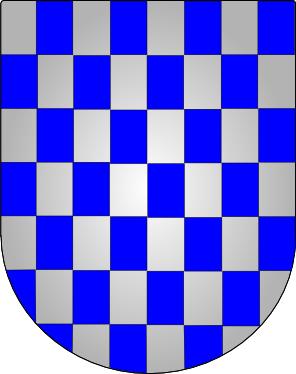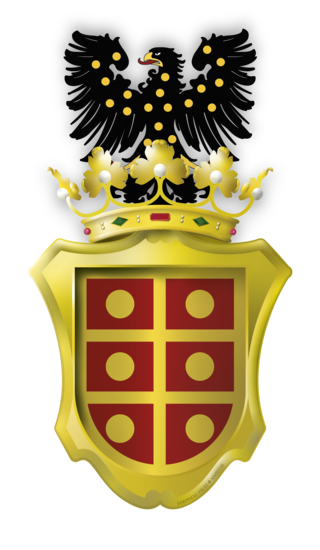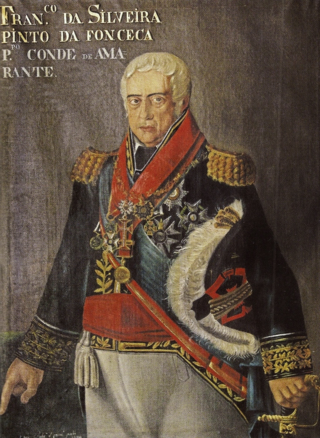Related Research Articles

Dona Maria II "the Educator" or "the Good Mother", was Queen of Portugal from 1826 to 1828, and again from 1834 to 1853. Her supporters considered her to be the rightful queen also during the period between her two reigns.

Peso da Régua, commonly known as Régua, is a city and municipality in northern Portugal, in the district of Vila Real. The population in 2011 was 17,131, in an area of 94.86 km2 (36.63 sq mi) km².
Count of Vidigueira was a Portuguese comital title of nobility awarded by King Manuel I of Portugal to Dom Vasco da Gama, who discovered the maritime route from Europe to India. The title was created by a royal decree issued in Évora on 29 December 1519, after an agreement signed in 7 November between Vasco da Gama and Dom Jaime, Duke of Braganza, who ceded him the towns of Vidigueira and Vila de Frades, granting Vasco da Gama and his heirs and successors all the revenues and privileges related.

Amarante is a municipality and municipal seat in the Tâmega e Sousa subregion in northern Portugal. The population in 2011 was 56,264, in an area of 301.33 square kilometres (116.34 sq mi). The city itself had a population of 11,261 in 2001. The city has been part of the UNESCO Creative Cities Network under the category of City of Music since 2017.
Hugo José Jorge O'Neill was the head of the O'Neill Clandeboy dynasty, which ruled a kingdom in Gaelic Ireland until the early 17th century, and has been in Portugal since the 18th century.
Viscount of São Jorge is a title was created by Carlos I of Portugal, by decree dated 7 November 1893, in the name of Adriano Auguto d´Oliveira, Knight of the Royal Household, Knight Commander of the Royal Military Order of Our Lady of Conception of Vila Viçosa. Adriano Auguto d´Oliveira married Eleanor Justine du Puy de Montbrun, daughter of the Marquess Lucien de Montbrun and the Marchioness Louise Amelie Marie Soulages de Saint-Marc. He lived in Paris and died in the same city without surviving descendants.
Francisco José Caeiro was a Portuguese politician and former Minister and law professor.

Marquess of Abrantes was a Portuguese title of nobility, granted by a decree issued by King John V of Portugal on 24 June 1718, to Rodrigo Anes de Sá Almeida e Menezes, 3rd Marquess of Fontes and 7th Count of Penaguião.

D. António de Almeida Soares de Portugal, 1st Count and 1st Marquess of Lavradio, 4th Count of Avintes, Governor General of Angola and Viceroy of Brazil. Born in Lisbon, Portugal on 1 May 1701; died in São Salvador da Bahia, Brazil on 4 July 1760. The first Marquess of Lavradio was a prominent Portuguese statesman and the head of an established noble family.

The House of Abrantes descends from the ancient and noble Almeida family.

Marquess of Lavradio is a Portuguese title of nobility created by Letters Patent of King José I of Portugal on 18 October 1753 for D. António de Almeida Soares de Portugal, 1st Count of Lavradio and 4th Count of Avintes.

D. Francisco da Silveira Pinto da Fonseca Teixeira, 1st Count of Amarante was a Portuguese army officer who fought in the War of the Oranges and other campaigns of the Peninsular War.
Vilafrancada was an uprising led by Prince Miguel in Vila Franca de Xira on 27 May 1823.
The Captaincies of the Azores were the socio-political and administrative territorial divisions used to settle and govern the overseas lands of the Azores by the Kingdom of Portugal. These territories, a segment of the Captaincies of the Portuguese Empire, which usually conformed to the individual islands, allowing the stewardship of the King through the Donatary and Captaincy system.

The Count of Almada is a noble title created by Queen Maria I of Portugal, by royal proclamation on 29 April 1793, in favour of D. Lourenço José Boaventura de Almada and his descendants, representatives of the Count of Avranches.

Fernando de Magalhães e Menezes. ComTE, CvC, CvA, OSE was a Portuguese colonial administrator and a military officer. He was also Chief of Staff during the 31 January 1891 revolt.
José Guedes de Carvalho e Meneses was a Portuguese colonial administrator. He was born on 19 May 1814 in Mancelos in northern Portugal. He was created Count of Costa by King Luís I in 1875. He was an older brother of Vasco Guedes de Carvalho e Meneses who was governor of Angola, Mozambique and Cape Verde.

Count of Avintes is a Portuguese title of nobility created by Letters Patent of King Afonso VI of Portugal on 17 February 1664 for D. Luis de Almeida, 5th Lord of Avintes. The title was conferred in perpetuity upon the 4th Count by King José I of Portugal in the same document by which he was elevated to the Marquessate of Lavradio, later confirmed by Letters Patent dated 29 August 1766.

The Fort Nossa Senhora do Rosário, better known as Forte São Francisco of Chaves is located in the city of Chaves, in the Parish of Santa Maria Maior, District of Vila Real, in Portugal.
References
- Nobreza de Portugal e Brasil (in Portuguese), vol. III (II ed.), Lisbon, Portugal: Direcção de Afonso Eduardo Martins Zuquete/Editorial Enciclopédia, 1989, pp. 273–275